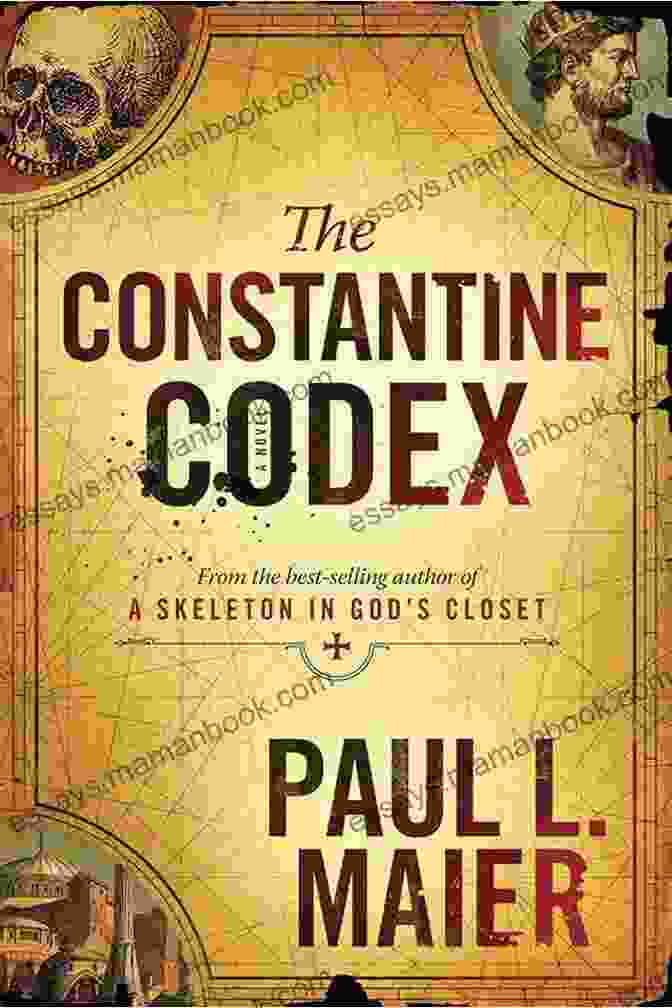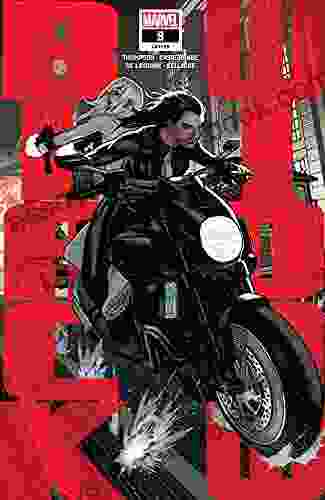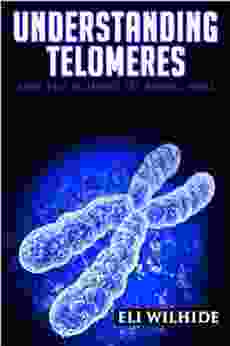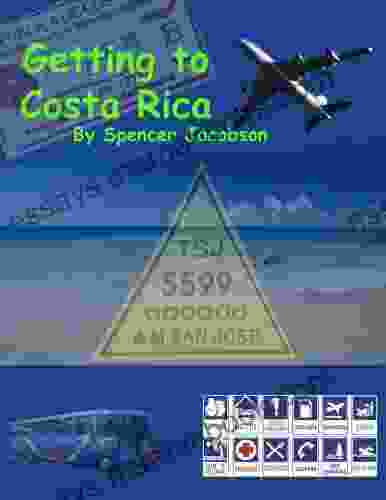The Constantine Codex Skeleton: Unraveling the Secrets of the Past

In the enigmatic annals of history, the Constantine Codex Skeleton stands as a captivating artifact that has ignited the imaginations of scholars and history enthusiasts alike. This remarkable find, unearthed from the depths of time, provides a tantalizing glimpse into the enigmatic past of the Byzantine Empire and the reign of Constantine the Great.

4.3 out of 5
| Language | : | English |
| File size | : | 4253 KB |
| Text-to-Speech | : | Enabled |
| Enhanced typesetting | : | Enabled |
| X-Ray | : | Enabled |
| Word Wise | : | Enabled |
| Print length | : | 367 pages |
| Screen Reader | : | Supported |
A page from the Constantine Codex Skeleton, showcasing its intricate calligraphy and striking illustrations.
Origins and Discovery
The Constantine Codex Skeleton was first discovered in the hallowed halls of the Vatican Library, where it has been meticulously preserved for centuries. This ancient manuscript, dating back to the early 6th century, is believed to be a product of the scriptorium of the Byzantine emperor Constantine VII Porphyrogennetos. Its exceptional craftsmanship and exquisite ornamentation suggest that it was commissioned as an imperial document of the highest importance.
The codex derives its name from its distinctive feature: a series of grotesque and skeletal figures that adorn the margins of its pages. These enigmatic drawings, rendered in vibrant colors, have sparked much speculation and debate among scholars.
Deciphering the Inscriptions
The Constantine Codex Skeleton is written in Greek, employing a complex and ornate script that makes its decipherment a formidable task. Over the centuries, scholars have painstakingly studied its intricate calligraphy, identifying a wealth of historical information and intriguing narratives.
The text consists of a diverse array of writings, including biblical passages, historical accounts, and theological treatises. Among its most notable contents are excerpts from the works of renowned historians such as Eusebius of Caesarea and Socrates Scholasticus. These passages provide valuable insights into the political, religious, and social landscape of the Byzantine Empire during the reign of Constantine the Great.
The Enigmatic Skeletal Figures
Undoubtedly, the most intriguing aspect of the Constantine Codex Skeleton lies in its captivating skeletal figures. These macabre drawings, scattered throughout the margins of the manuscript, have been the subject of much scholarly investigation and imaginative interpretation.
Some theories suggest that the skeletons represent a memento mori, a reminder of the inevitability of death and the transience of human life. Others speculate that they may symbolize the frailty of the human body and the enduring power of the spirit. Still, others believe that these skeletal figures hold deeper esoteric or allegorical meanings that remain to be fully understood.
Historical Significance
Beyond its captivating imagery, the Constantine Codex Skeleton is a priceless historical artifact that sheds light on the Byzantine Empire's cultural and intellectual achievements. Its meticulous craftsmanship and elaborate illuminations reflect the empire's artistic prowess and its commitment to preserving and transmitting knowledge.
The codex serves as a tangible link to the past, providing historians and scholars with invaluable insights into the daily life, beliefs, and aspirations of the Byzantine people. Its discovery has contributed significantly to our understanding of this pivotal era in human history.
Preservation and Digitalization
Recognizing the immense historical and cultural significance of the Constantine Codex Skeleton, the Vatican Library has taken meticulous care to preserve this ancient treasure. Advanced conservation techniques have been employed to safeguard its delicate pages and ensure its preservation for generations to come.
In recent years, the codex has undergone a comprehensive digitalization process, making its contents accessible to a wider audience. High-resolution images and interactive tools allow researchers and enthusiasts alike to explore this remarkable artifact in unprecedented detail.
The Constantine Codex Skeleton remains an enduring testament to the enduring power of the written word and the enduring fascination with the enigmatic past. Its intricate calligraphy, vivid illustrations, and enigmatic skeletal figures continue to captivate and inspire scholars, historians, and all who seek a glimpse into the vanished world of the Byzantine Empire.
As we continue to unravel the secrets held within its pages, the Constantine Codex Skeleton stands as a perpetual source of knowledge, wonder, and a reminder of the enduring legacy of humanity's intellectual and cultural achievements.
4.3 out of 5
| Language | : | English |
| File size | : | 4253 KB |
| Text-to-Speech | : | Enabled |
| Enhanced typesetting | : | Enabled |
| X-Ray | : | Enabled |
| Word Wise | : | Enabled |
| Print length | : | 367 pages |
| Screen Reader | : | Supported |
Do you want to contribute by writing guest posts on this blog?
Please contact us and send us a resume of previous articles that you have written.
 Top Book
Top Book Novel
Novel Fiction
Fiction Nonfiction
Nonfiction Literature
Literature Paperback
Paperback Hardcover
Hardcover E-book
E-book Audiobook
Audiobook Bestseller
Bestseller Classic
Classic Mystery
Mystery Thriller
Thriller Romance
Romance Fantasy
Fantasy Science Fiction
Science Fiction Biography
Biography Memoir
Memoir Autobiography
Autobiography Poetry
Poetry Drama
Drama Historical Fiction
Historical Fiction Self-help
Self-help Young Adult
Young Adult Childrens Books
Childrens Books Graphic Novel
Graphic Novel Anthology
Anthology Series
Series Encyclopedia
Encyclopedia Reference
Reference Guidebook
Guidebook Textbook
Textbook Workbook
Workbook Journal
Journal Diary
Diary Manuscript
Manuscript Folio
Folio Pulp Fiction
Pulp Fiction Short Stories
Short Stories Fairy Tales
Fairy Tales Fables
Fables Mythology
Mythology Philosophy
Philosophy Religion
Religion Spirituality
Spirituality Essays
Essays Critique
Critique Commentary
Commentary Glossary
Glossary Bibliography
Bibliography Index
Index Table of Contents
Table of Contents Preface
Preface Introduction
Introduction Foreword
Foreword Afterword
Afterword Appendices
Appendices Annotations
Annotations Footnotes
Footnotes Epilogue
Epilogue Prologue
Prologue Fiona Davis
Fiona Davis Thomas H Cormen
Thomas H Cormen Joel Grus
Joel Grus Jessica Thomas
Jessica Thomas Frederick Johnson
Frederick Johnson Mark S Burrows
Mark S Burrows Mark Sullivan
Mark Sullivan Georges Bizet
Georges Bizet Geoffrey Peyton
Geoffrey Peyton Kevin J Kauffman
Kevin J Kauffman Cody Rose Clevidence
Cody Rose Clevidence Benedikt Koehler
Benedikt Koehler Austin Smith
Austin Smith Stephen Matthews
Stephen Matthews Jon Yablonski
Jon Yablonski Adam Woog
Adam Woog Bronwyn Ward Manson
Bronwyn Ward Manson Rodney Wash
Rodney Wash Fernanda Hellen Ribeiro Piske
Fernanda Hellen Ribeiro Piske Sara Mcclure
Sara Mcclure
Light bulbAdvertise smarter! Our strategic ad space ensures maximum exposure. Reserve your spot today!

 William FaulknerLearn Data Analysis Tips and Tricks of Statistical and Machine Learning...
William FaulknerLearn Data Analysis Tips and Tricks of Statistical and Machine Learning...
 DeShawn PowellBud Hawthorne Revue Volume: A Comprehensive Encyclopedia of Cannabis Culture
DeShawn PowellBud Hawthorne Revue Volume: A Comprehensive Encyclopedia of Cannabis Culture Albert ReedFollow ·12.2k
Albert ReedFollow ·12.2k Howard PowellFollow ·18.8k
Howard PowellFollow ·18.8k Dustin RichardsonFollow ·16.1k
Dustin RichardsonFollow ·16.1k Ruben CoxFollow ·16.6k
Ruben CoxFollow ·16.6k Bryson HayesFollow ·7.3k
Bryson HayesFollow ·7.3k Jon ReedFollow ·12.4k
Jon ReedFollow ·12.4k Eric HayesFollow ·12.4k
Eric HayesFollow ·12.4k Stuart BlairFollow ·18.7k
Stuart BlairFollow ·18.7k

 Dean Butler
Dean ButlerBlack Widow 2024: A Comprehensive Guide to Kelly...
In 2024, Marvel...

 Gage Hayes
Gage HayesNothing and the Speck: An In-Depth Analysis of Yana...
Yana Toboso's works, particularly the manga...

 Stan Ward
Stan WardThe Best American Poetry 1997: James Tate
The Best American Poetry...

 Corey Green
Corey GreenThe Chance of Home: Exploring the Poetic Landscape of...
Immerse yourself in the evocative world of...
4.3 out of 5
| Language | : | English |
| File size | : | 4253 KB |
| Text-to-Speech | : | Enabled |
| Enhanced typesetting | : | Enabled |
| X-Ray | : | Enabled |
| Word Wise | : | Enabled |
| Print length | : | 367 pages |
| Screen Reader | : | Supported |












